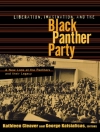Air empire is a fresh study of civil aviation as a tool of late British imperialism.
The first pioneering flights across the British empire in 1919-20 were flag-waving adventures that recreated an era of plucky British maritime exploration and conquest.
Britain’s development of international air routes and services was approved, organised and celebrated largely in London; there was some resistance in and beyond the subordinate colonies and dominions. Negotiating the financing and geopolitics of regular commercial air service delayed its inception until the 1930s. Technological, managerial and logistical problems also meant that Britain was slow into the air and slow in the air. Propaganda concealed underperformance and criticism.
The study uses archival sources, biographies, industry magazines and newspapers to chronicle the disputed progress toward air empire. The rhetoric behind imperial air service offers a glimpse of late imperial hopes, fears, attitudes and style. Empire air service had emotional appeal and symbolic value, but disappointed in practice.
Table des matières
1. Introduction
PART 1 LOOKING UP
2. Ideas and initiatives
3. Empire airway pioneering
4. Conferring and agitating
PART 2 TALKING UP
5. Organising Empire civil aviation
6. Route reconnaissance
7. Propagating Empire aviation
PART 3 HOLDING UP
8. Trunk route development
9. Route organisation
10. Eastern crescent
11.African arc
PART 4 SHORING UP
12. Arguing about Imperial Airways
13. Reconfiguring Empire aviation
14. Transformation
15. Conclusion
A propos de l’auteur
John Mac Kenzie is Emeritus Professor of Imperial History, Lancaster University and holds Honorary Professorships at Aberdeen, St Andrews and Stirling, as well as an Honorary Fellowship at Edinburgh.












